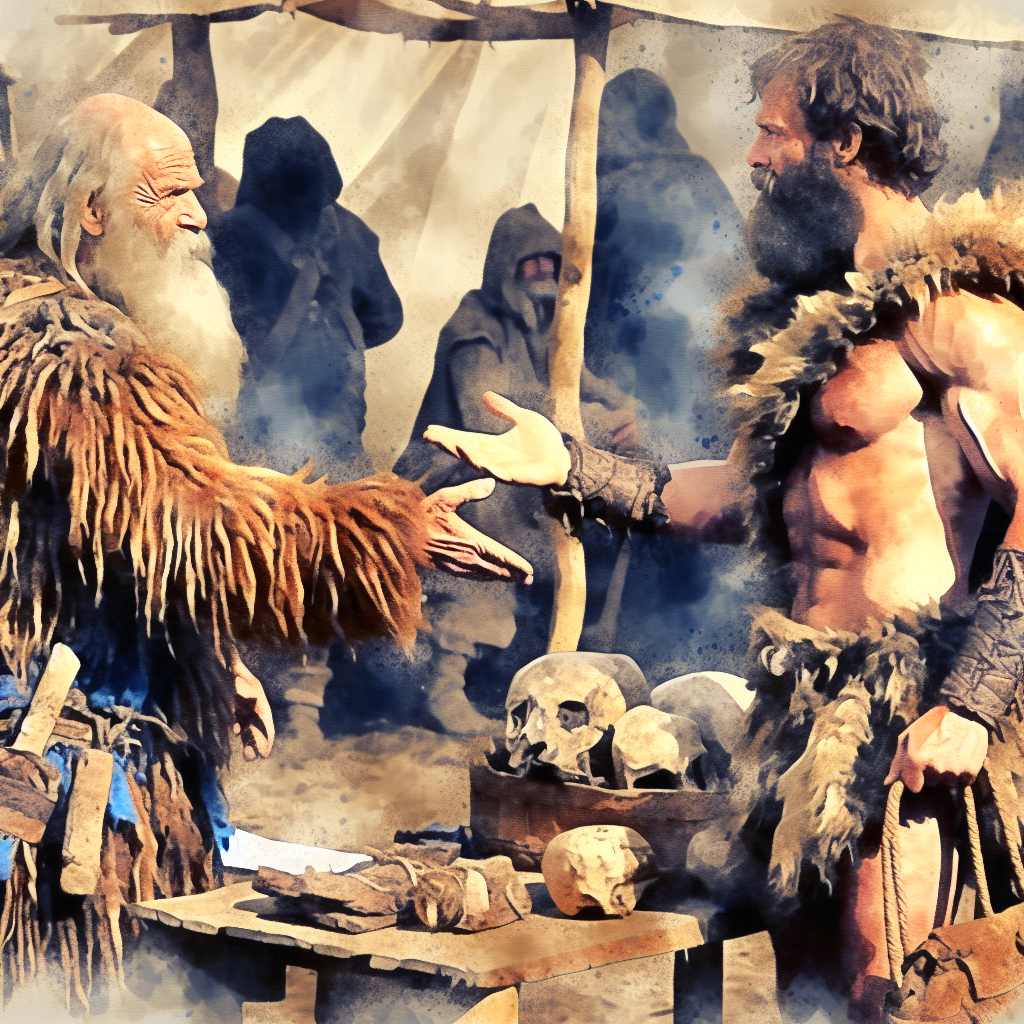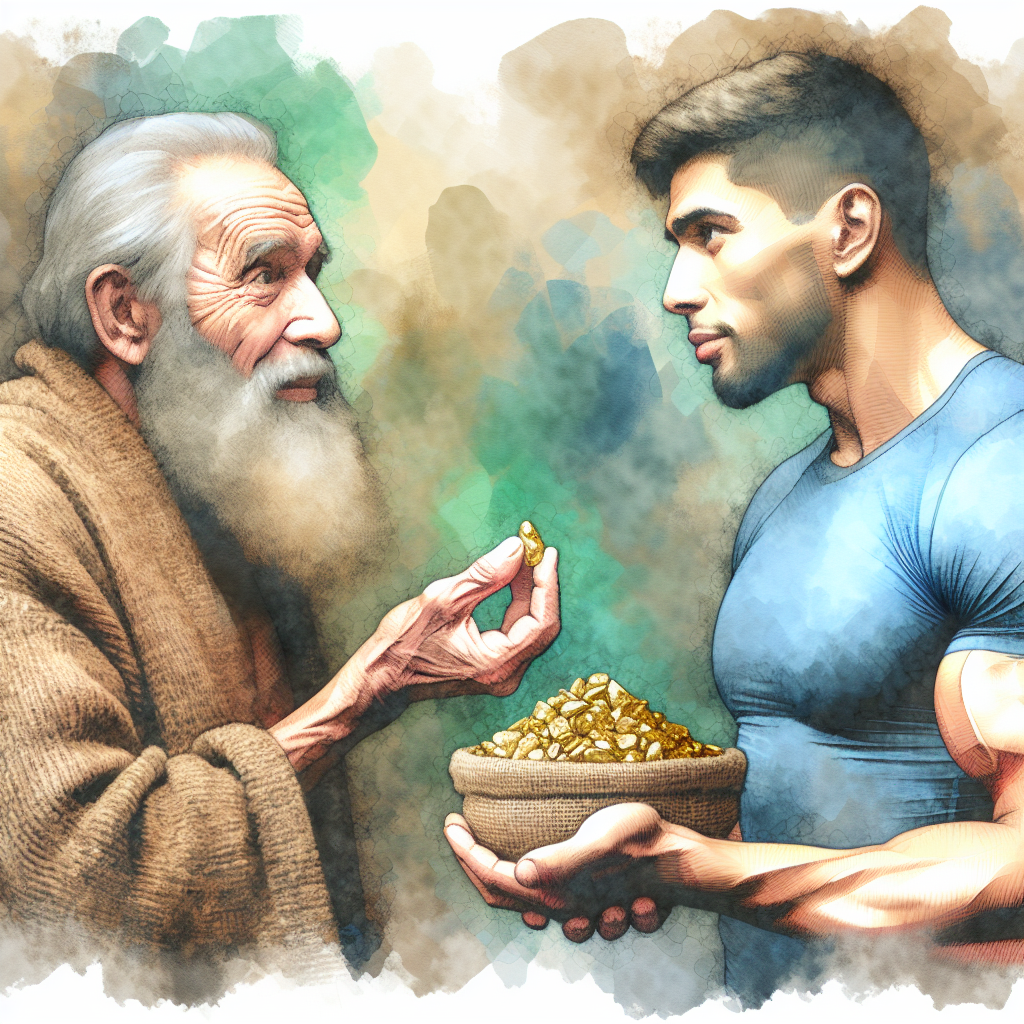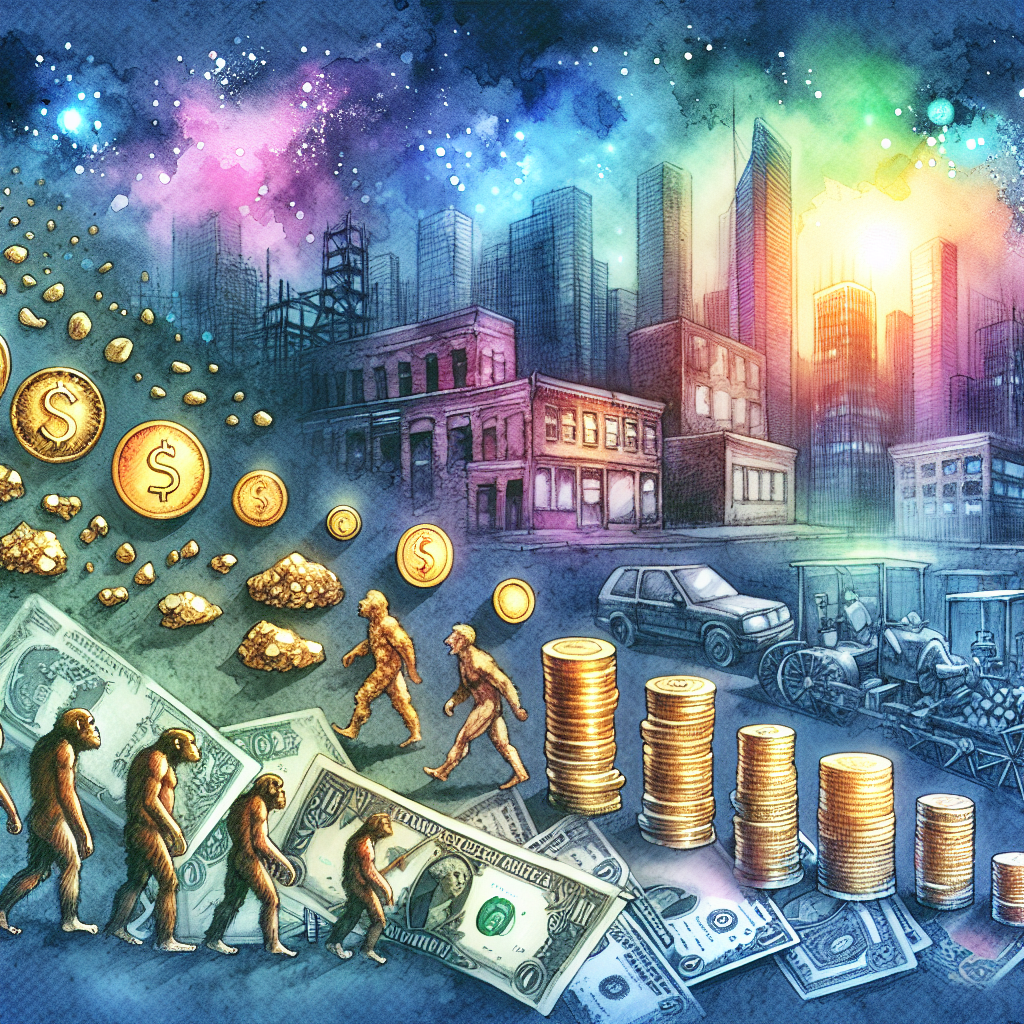The Emergence of the Evolutionary Money Theory
(generated by you+AI)
Draw a primitive market scene, portraying a barter exchange between two figures cloaked in animal hide, expressing frustration. The figure with long grey beard seems to question the fairness of the trade while the other, a muscular figure seems assertive.
The story begins in a primitive society where barter is the main method of exchange. The drawbacks of this system, such as double coincidence of wants, lead to the need for a better system.
Paint the same grey-bearded elder and muscular man from the earlier image, now exchanging goods with gold nuggets or grains. Their expressions are attentive and intrigued, depicting a sense of novelty in the method.
The society gradually responds to this need by introducing a special commodity-money, a universally acceptable bridge for exchange of goods. This early form of money transforms the trading system and increases efficiency.
Trace the evolution of money with scattered symbols - primitive gold nuggets leading to coins and then to banknotes and credit cards. In the backdrop, show epochs changing from a primitive era to an industrial colonized city made of bricks and steel then heading into modern city lit up with skyscrapers under neon lights.
Over time, the significance of money evolves from mere commodity exchange to an instrument for mercantile capitalism, extractive colonialism, and eventually credit money in industrial and postindustrial societies, signifying the birth of the evolutionary money theory.
© 2023 Logolept


